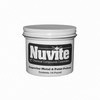In the late 1950’s and early 1960’s, Airstream offered as an option an on-demand water heater made in West Germany, the Vaillant. It was also very popular as an aftermarket heater for those trailers that did not initially come with water heaters, such as the small 16-18 foot trailers, and in many cases was hung on the bathroom wall. On the factory installations, usually 18 footers and 22 footers, they were mounted between the galley and bathroom in the closet, sometimes facing inward with a vent to outside, or facing outwards in an enclosed compartment.
The Vaillant is no longer sold in the US, but the very similar Paloma, made in Japan where they are the most common way used to heat water for homes, uses the same technology.

At issue with these heaters is that they are designed to use internal room air for combustion. While this worked back in the days of personal responsibility (always leave a window cracked), they don’t fit in today’s litigious society, and is one reason why Vaillant retreated from the US, and Paloma says they are not approved for RV use. If you do decide to install one or use the one you have, take venting precautions and use common sense.

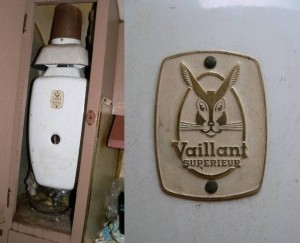
This is one way Airstream installed them, in a vented closet. On the outside skin is a small aluminum louver panel. The Vaillant emblem is on the right.
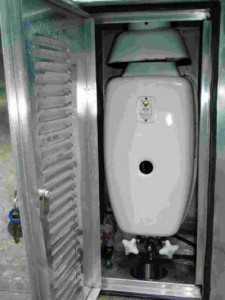
Here is the other way, the heater was in an external compartment.
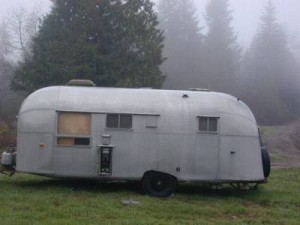
The exhaust vent was right above the compartment. This is a 1963 California Flying Cloud.
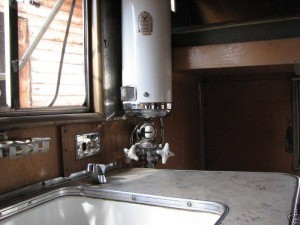
Some of the early Vaillants were downright Deco as in this 1954 Holiday.
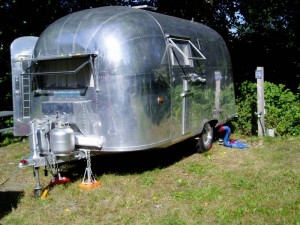
Here is a 1958 Traveler with the original externally vented Vaillant.
On-demand water heaters heat water only when there is a demand for it – when water flows through it. This is accomplished with a small pilot light and a flow sensor. You turn on the tap, water flows through the unit, and the burner flame comes on and heat the water as it rushes through the coils. The flame is modulated by the water flow. Water flow stops, and the burner stops. You can see that this has two advantages. You only heat the water you use, saving propane, and you have an endless supply – you aren’t limited to the 6 gallons of a standard tank unit. The key is that the unit must be sized right, so that it’s GPM capacity is greater than the demand flow of the shower or faucet.





